
How much does it cost to install a doorbell camera? It depends on whether you plan to DIY or hire a pro. Learn about different models and their power sources, too.
Your options for peace of mind all the time


Home security cameras not only provide useful evidence after a crime occurs, but they can also deter crime from happening in the first place. A study by the University of North Carolina surveying over 400 incarcerated burglars found that security cameras were one of the most effective deterrents when selecting a target for break-ins. Depending on the model you choose, they can be costly, but it’s a small investment for protection and peace of mind.
Read on to learn about the main types of home security cameras and see which is best for your household.
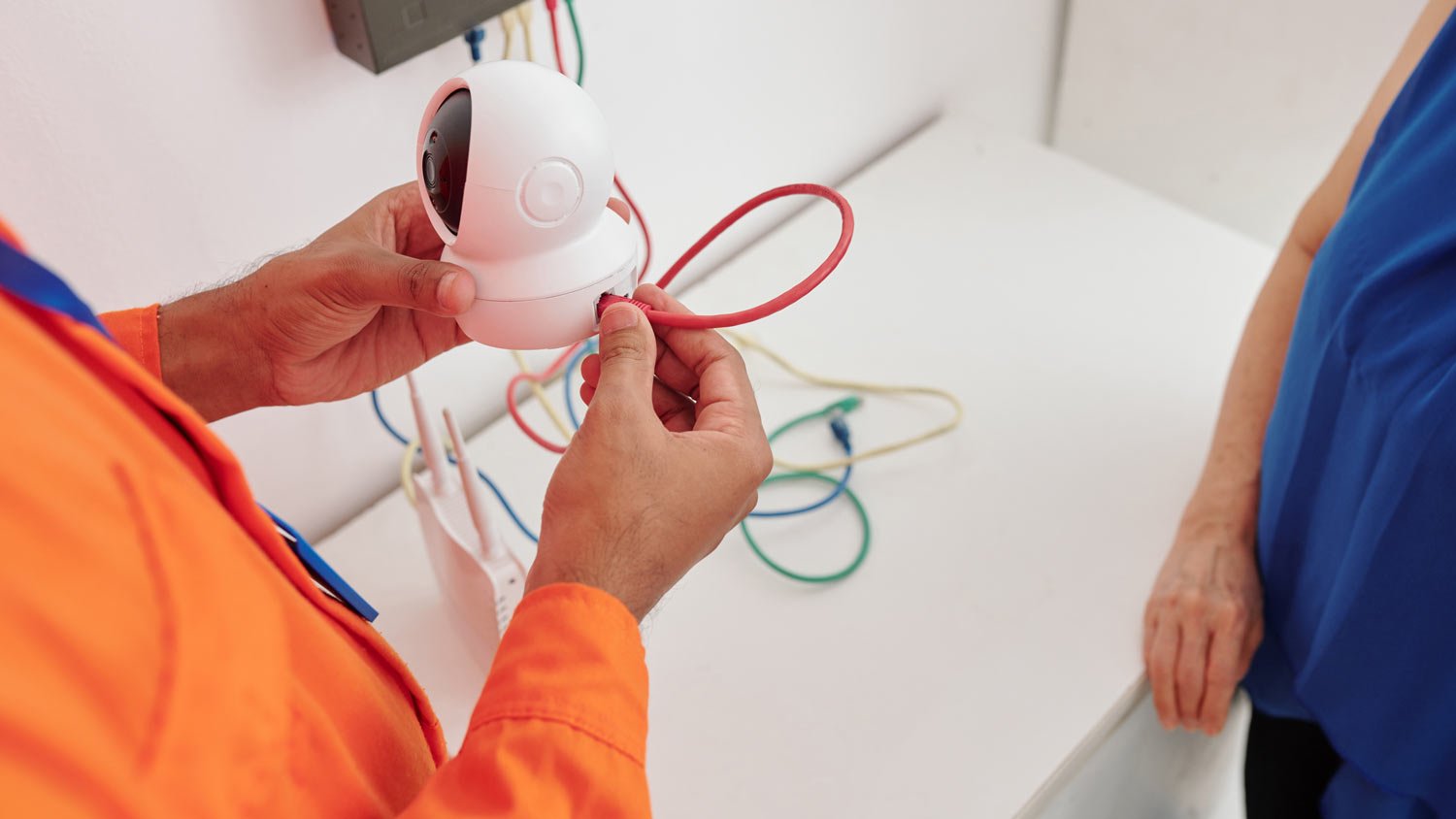
One of the first decisions you’ll have to make when deciding on a home security camera is whether you want one that is wired or wireless. Wired cameras are more reliable for a few reasons: The footage is generally more secure and of higher quality, and they often have battery backup systems, making them less likely to fail.
A downside to wired cameras is that they usually require professional installation and are subsequently more expensive. The cost to install security cameras is $1,300 on average, with a normal range between $600 and $2,000.
| Pros | Cons |
|---|---|
| More secure | Require professional installation |
| Better video quality | More expensive |
| Includes battery backup |
Best for: Homeowners who want the most reliable solution
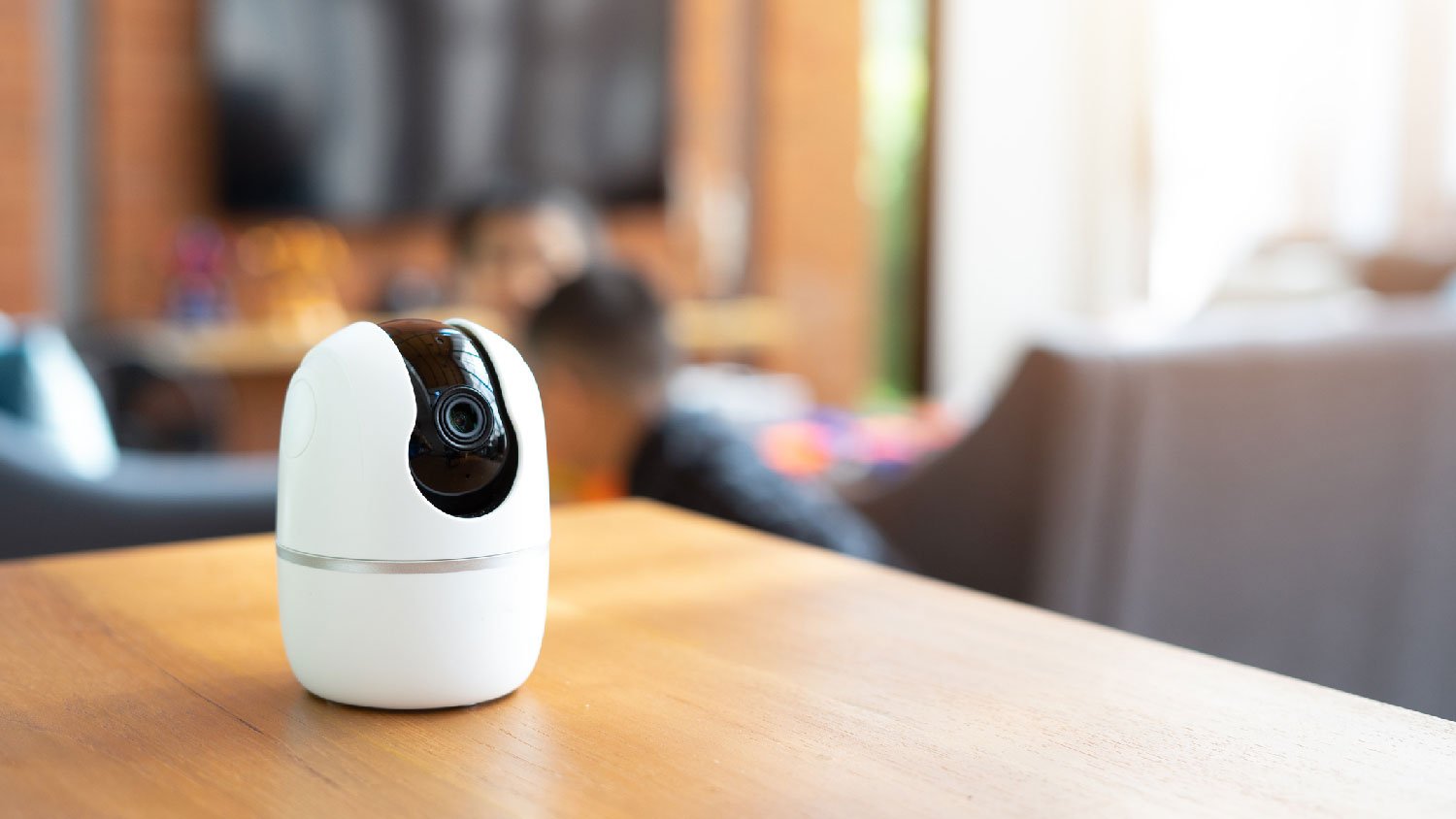
Wireless cameras transmit audio and video footage wirelessly, typically over Wi-Fi. The footage is stored in a cloud, which lets users access it from various devices, even when they’re not home. Wireless cameras can have a few different power sources, including batteries and solar power, but most use AC power and are plugged into an outlet, often via a power cable. So, wireless cameras do, in fact, have wires; the name comes from how they transmit footage.
This style of camera is easier to install, and the majority of homeowners will be able to do so on their own. As a result, wireless cameras are a good option for saving money. Some wireless cameras record continuously, but others only begin recording when they detect motion. One drawback to wireless cameras is that they are easier to hack than wired ones. However, Wi-Fi security cameras are generally safe when homeowners practice proper internet security.
| Pros | Cons |
|---|---|
| Easy to move | Can be hacked |
| Simple installation | Not as reliable |
| More affordable |
Best for: Homeowners who may move in the future
Practice password safety with your Wi-Fi network. Changing your password regularly can help prevent hackers from accessing your security devices.

Security camera placement is your next big decision. While some cameras can be used both indoors and outdoors, the latter tend to be larger and more durable to withstand the elements. Outdoor cameras naturally keep track of what occurs outside your home and can be positioned to view different parts of your property. Placing the cameras where would-be intruders can clearly see them also acts as an effective deterrent from break-ins. They also offer a variety of additional features, like presence detectors or motion detectors, for enhanced security.
Many cameras designed for outdoor use are hardwired and have more complex installation requirements to protect them from tampering, so you’ll likely need a pro to set them up. This increases the costs, but if you’ve purchased outdoor cameras as part of a home security package, installation may be included in your monthly fee.
| Pros | Cons |
|---|---|
| Visibility may deter criminals | May require professional installation |
| Added level of security | More expensive |
| Highly durable |
Best for: Offering visibility outside your home

Indoor cameras are designed to be less conspicuous and record what occurs in the home. They are useful for documenting the events of a crime and possibly identifying the intruder. When properly placed at entrances, indoor cameras often notify homeowners if a break-in occurs by detecting movement. Many indoor security cameras are wireless and deliver footage to a smartphone app via Wi-Fi, which cuts down on costs significantly.
Many people use indoor cameras for childcare and pet care purposes, in addition to security. With the mounting prevalence of indoor cameras, manufacturers emphasize sleek, discreet styles that blend into your home. Despite their inconspicuousness, they can still deter criminals, though perhaps not as well as noticeable outdoor cameras. If you want to install indoor cameras and want greater peace of mind, there are other home security tactics, like securing basement windows.
| Pros | Cons |
|---|---|
| More aesthetic design | May not deter criminals |
| Often include motion detectors | Not a well-rounded solution |
| Can move from room to room |
Best for: Additional level of security
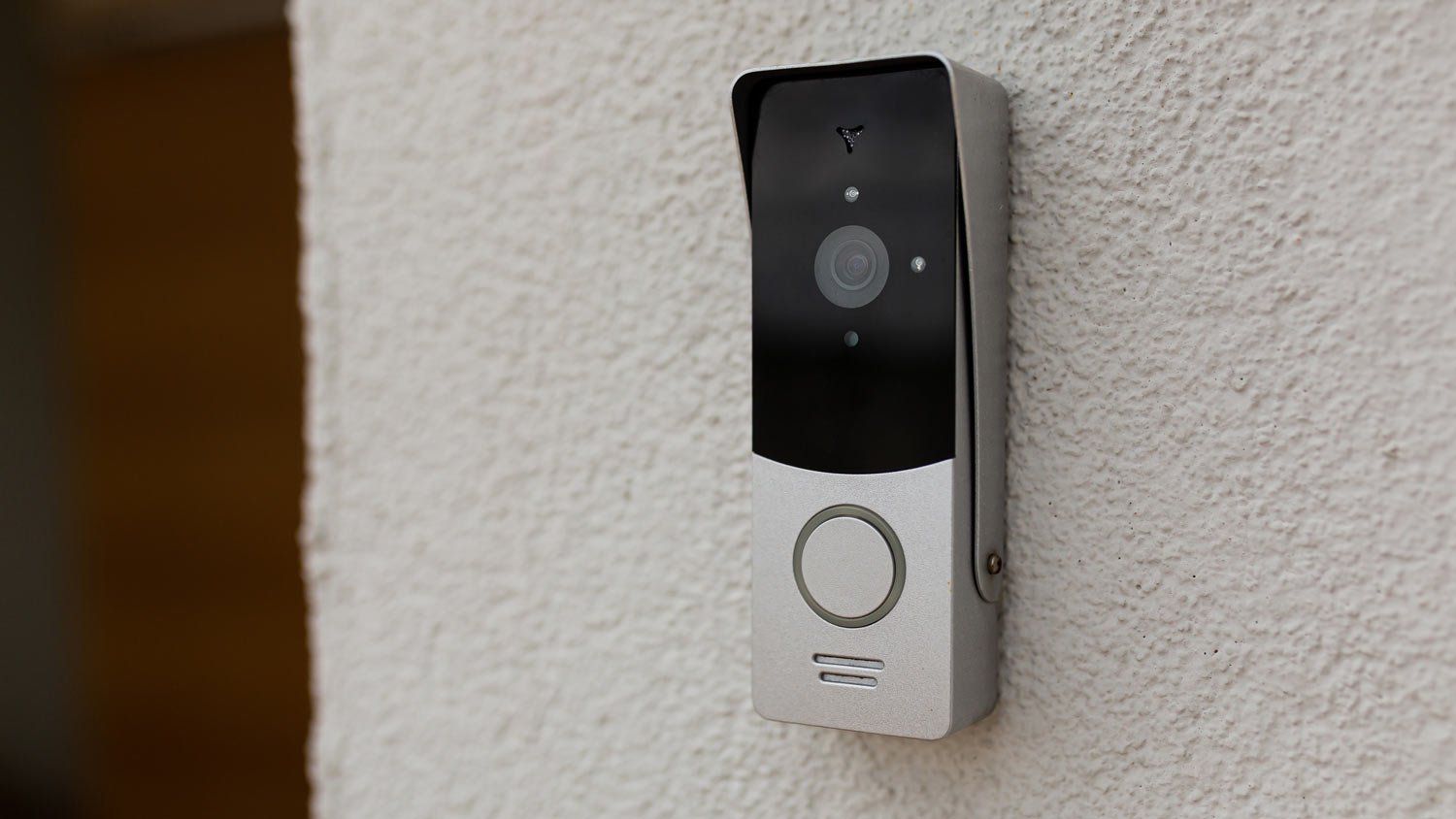
Video doorbells are easy to install and discreet but may still ward off would-be intruders upon reaching your front porch. Video doorbells can be installed where traditional doorbells go and are only slightly larger in size. The cost to add a video doorbell to your home ranges from $50 to $600, depending on how sophisticated of a model you purchase and whether it’s installed professionally or you install it yourself. Video doorbells can be wired or wireless.
They often come with an array of security features in addition to recording; some have alarms, motion detection, smart alerts, remote locking and unlocking, and facial recognition software. Popular manufacturers include Arlo, Wyze, Ring, Blink, SimpliSafe, and Google Nest.
| Pros | Cons |
|---|---|
| Very cost-effective | Can be hacked |
| Multiple types and options | May require Wi-Fi |
| Live footage of home’s entrance | Known for false alarms |
Best for: Seeing your home’s entrance at all times
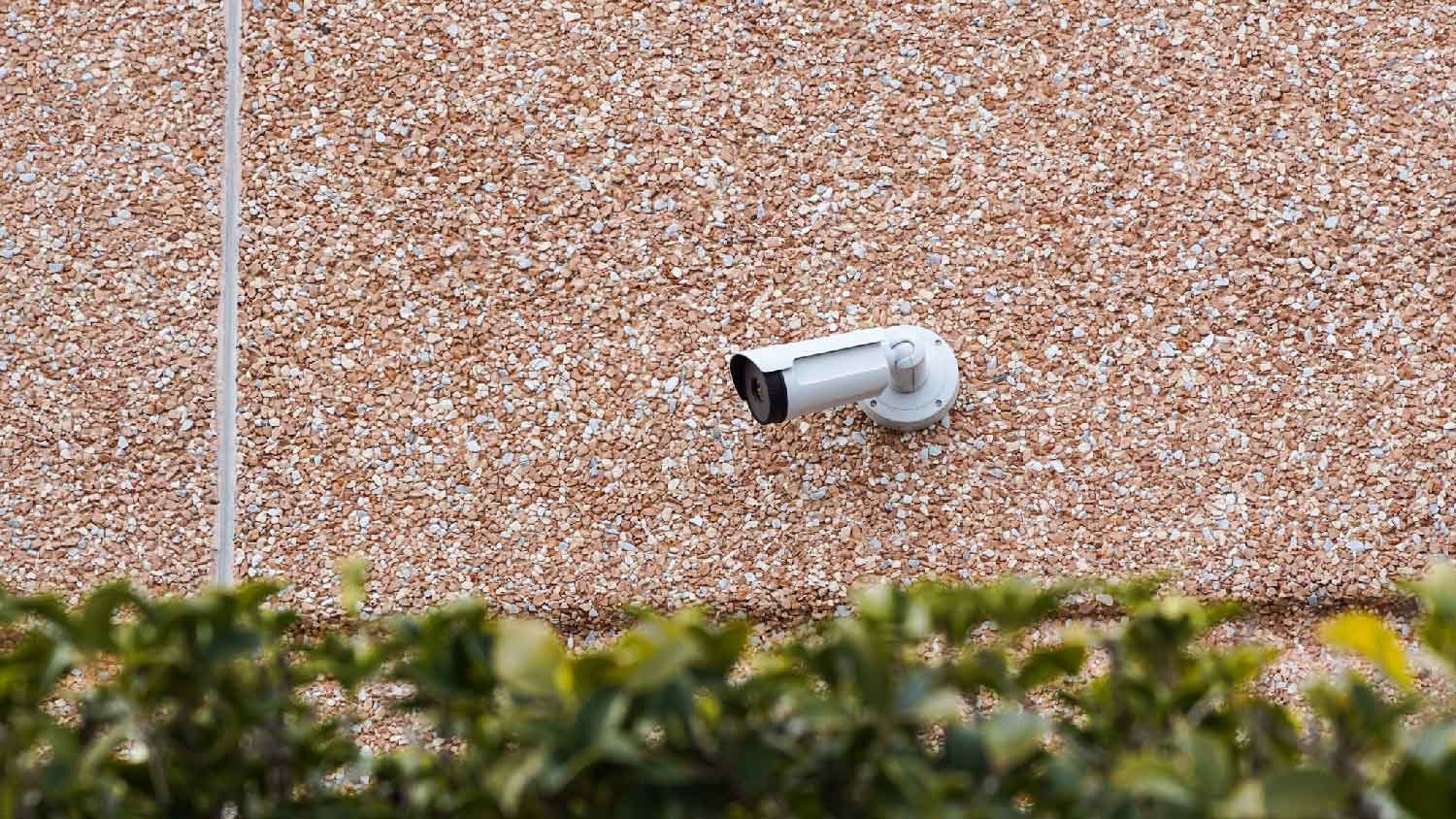
You may recognize this type of camera you’d see in TV and movies, as it’s the classic design for many commercial properties. These cameras are named for their shape: Their long, cylindrical design makes them effective visual deterrents to perpetrators. Additionally, the lenses tend to have excellent long-distance range. For these reasons, bullet cameras are more often used outdoors, though many can be placed indoors too.
| Pros | Cons |
|---|---|
| Highly visible | More expensive |
| Easy installation | Best for commercial properties |
| High resolution |
Best for: Deterring criminal activity outside commercial properties
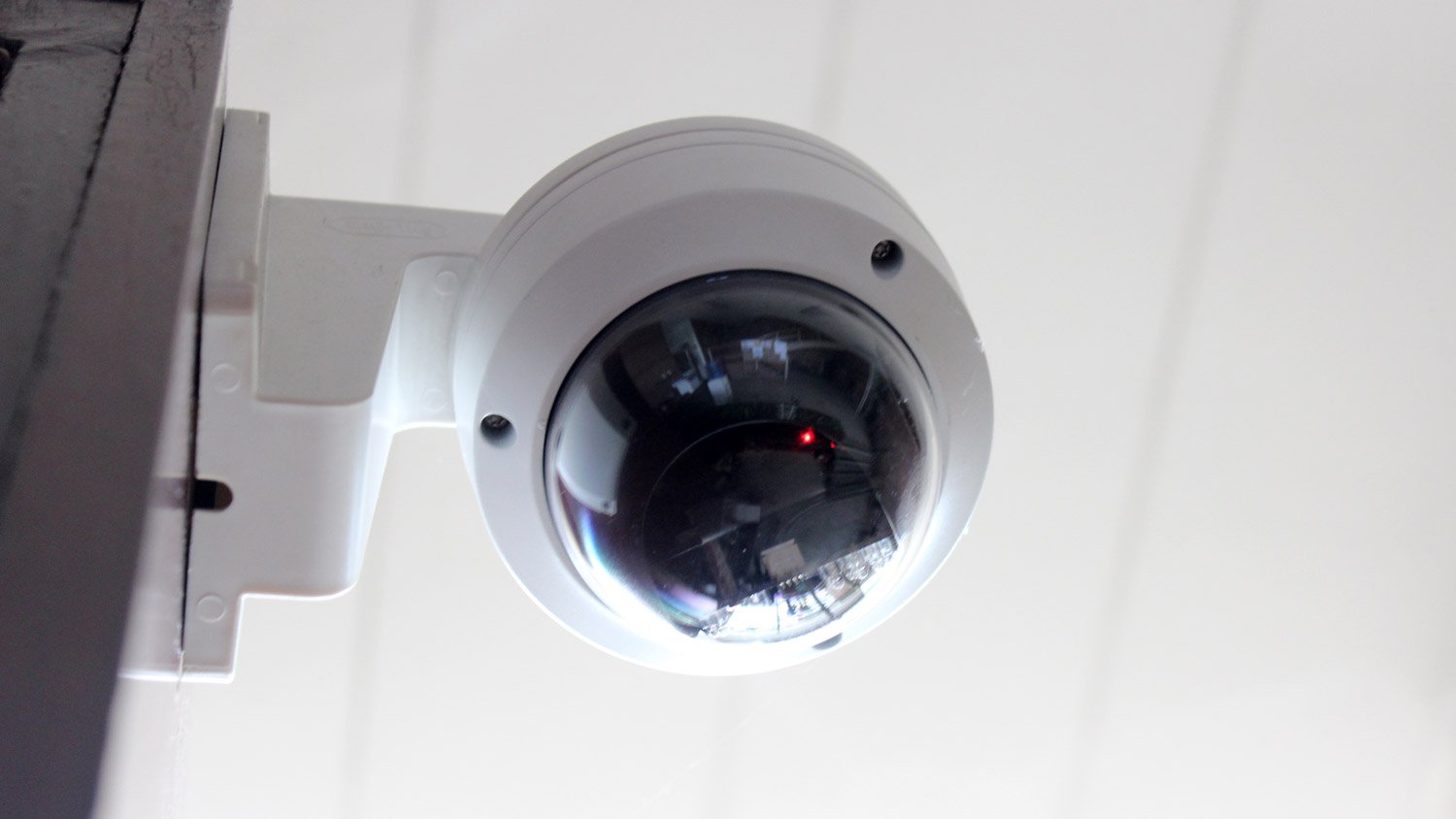
Dome cameras are the primary alternative to bullet cameras and are also named for their shape. They are smaller, more discreet, and often have a wider field of view. While these characteristics suit indoor usage well, dome cameras are commonly used for outdoor monitoring too. One benefit is that their shape makes them harder to tamper with. Unfortunately, dome cameras are harder to install than bullet-style ones. If you choose to go with dome cameras, you may need to look up security camera companies in your area to help with installation.
| Pros | Cons |
|---|---|
| Wide angle lens | Difficult installation |
| Indoor or outdoor use | More expensive |
Best for: Capturing video footage inside commercial properties
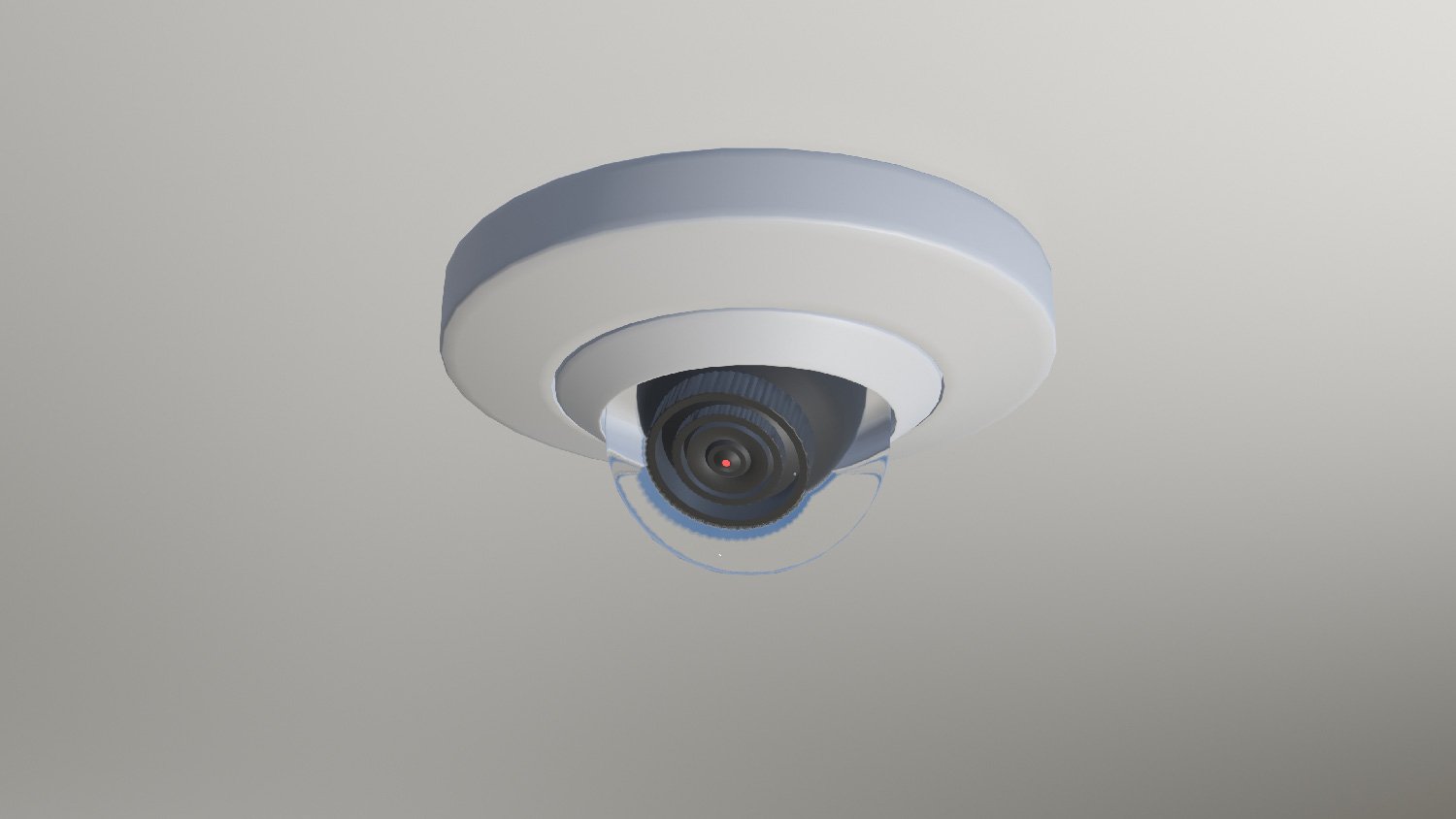
PTZ stands for “pan, tilt, zoom.” These are lens movements that users can do manually or ones done automatically based on motion detection. Panning is a horizontal camera movement. Tilting is a vertical movement. Zooming is an increase or decrease in distance. Some PTZ cameras offer a 360-degree view and 40x optical zoom. Prices vary, but they tend to be pricier than fixed cameras. PTZ cameras can be wired or wireless, depending on your preference.
| Pros | Cons |
|---|---|
| Tracks motion automatically | More expensive |
| Includes zoom features | Difficult maintenance |
| Limited blind spots |
Best for: Tracking motion across a large area
The answer to this question depends on your situation and security needs. If your goal is to prevent criminal activity, focus on outdoor cameras that are visible from all angles. But if you want to see what’s going on in your home or capture footage during a break-in (or funny videos of your cats while you’re away), get an indoor camera.
Most homeowners opt first for an outdoor camera and then add indoor cameras. Then, you can add additional levels of security, like motion detectors or window sensors, to increase your ROI.
Today, home security cameras range drastically in terms of price, features, capabilities, and more. Depending on your abilities and home, a home alarm system is worth it if you get all the bells and whistles. But sometimes, you may be OK with only the bare minimum. Here’s what we recommend looking for in a security camera:
High resolution. For the best level of visibility, look for a device with a resolution of at least 1080p.
Wide angle view. Opt for a device with a wide-angle lens to capture more of an area with one camera. This is especially important for outdoor cameras.
Built-in microphone. Ensure your selected device has a built-in microphone and audio recording to capture sound.
Ability to monitor remotely by phone. Many home security devices on the market today offer remote access to live video footage, which can provide insight into what’s happening inside or outside your home at all times.
Smartphone integrations. If you use smart home devices like Amazon Alexa, choose a home security camera that can integrate seamlessly. Having more control over your device means a better ROI.
False alarm prevention features. Doorbells and indoor cameras are prone to false alarms, especially if you have animals in your home. If you are at risk for false alarms, look for a system that includes prevention methods.
Many companies today promote DIY installation as a key selling point, especially for video doorbells or indoor cameras. These devices can take as little as 10 minutes to get up and running without needing any type of hard wiring.
But, there are often times when it’s better for your investment to hire a professional security camera installation company to install them for you, especially if you opt for a wired security system.
Installing a security camera system costs an average of $1,300, although prices start at just $125. In some cases, this cost includes the devices themselves, plus the strategy and expertise that comes from years of experience in security. These experts can figure out where to place home security cameras to maximize coverage and tackle all the key vantage points of your home. They can also recommend what types of cameras work best to increase your security.
From average costs to expert advice, get all the answers you need to get your job done.

How much does it cost to install a doorbell camera? It depends on whether you plan to DIY or hire a pro. Learn about different models and their power sources, too.
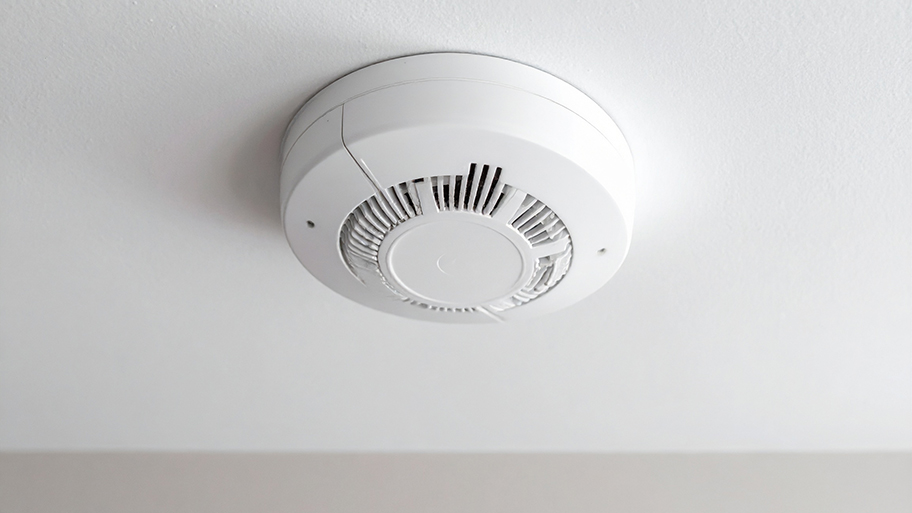
Discover true smoke detector installation costs. Learn about average prices, cost factors, and tips to save on your smoke detector installation project.

Discover wall safe installation cost details. Learn about average prices, key cost factors, and tips to save on your wall safe project.

Wondering why your carbon monoxide alarm is beeping? This guide will help you understand the different sounds that come from your device.

Looking to truly amp up your home’s overall security level? Keep reading to learn how to install a security system all by yourself.

To protect yourself from a fire, you should know the best types of smoke detectors for your home and the pros and cons of each.